Objective: To implement a robust yet flexible finance system that meets both today and tomorrow’s management’s needs. Realign human capital, to meet needs and adjust hierarchical reporting to meet objectives. The said transformation must equate to at least a 12% expense saving.
Situation: The complex organic growth of a national leader that is vertically integrated, has implicitly decayed the value of management’s ability to extract, interpret and produce added value reports. There is no standardization in procedures, policy manuals being obsolete, and questionable squandering of resources in either or both of head count and manual initiatives.
FINDINGS: On concluding of an in-depth discussion with the executive team, which included working members from all segments of the operation – the stakeholders, a vision was developed that supported a value proposition that will meet managements necessities and be flexible enough to be fluid for changes in the future. A comprehensive blueprint was developed, to depict all milestones in the finished product. A definitive look and feel was created, detailing the gap (if any) to the predefined objectives. Customizing all possible work-a-rounds into the workflow, as a standard operation feature and best practices. The blueprint identified and reflect exactly what will be achieved, full integration methodology, and its core capabilities. In addition a comprehensive risk analysis was preformed, to identify all elements of risk, the counter measures available, together with and all cost and time impacts. At this stage a comprehensive fiscal budget was developed to consolidate all elements of the project; such included change strategy, project management, implementation strategies and measurement variances.
The fiscal budget and funding determination was the final decision that afforded the stakeholders to be committed to the project. On approval the right people were recruited to execute the vision. Change strategy status of being implicit to explicit was evident as the team from the vision development carried larger roles and the resistance to change was negated. Policies and procedures where developed to encompass buy in from all users and ensure the organization as a whole can adopt and support these operational changes
Project Management policies and procedures where implemented – measure progress against predefined milestones. Continually addressing gaps, reassess project timeliness and cost impacts. Implementation, design and execution, are the key definitive results of the project – identify key resources, set objectives and expectations are paramount to any successful project. Implementation across the board of industries best practices are similarly important. Key stakeholders are involved to ensure all needs / requirements are met. Dashboards and customizations are developed. In addition to the “obvious” additional elements such as workflow, development of key performance measures / Key performance indicators, GAP analysis, meeting of local legislation, GAAP compliance, corporate compliance, and ensuring that all technology can be manipulated to meet the finance department needs.
In addition to the fiscal requirements being met, Just-In-Time manufacturing methodologies where implemented as well as logistical delivering applications implemented. This area, alone contributed to significant increase in cash on hand, ROI, inventory turnover, not to mention the reduction of delivery costs due to the new logistics application.
New policies and procedures with corporate timeliness where implemented. Appropriate training and educating employees was undertaking. Reconfiguration of such workflow addressed headcount and reporting structure. Numerous positions were eliminated, due to the reduction of “work a rounds”, better automation and compression of the corporate hierarchy. In addition to the visible changes, reporting and coherent data was available quicker, and in some instances live on demand.
SOLUTON: The final yet important task was measurement. Did we deliver as requested? Measurement – testing and determining if all the blueprint objectives where met, within budget and the projected timelines. The answer was yes! All objectives where exceeded, and within budget. Savings the first year was in excess of 20%.
